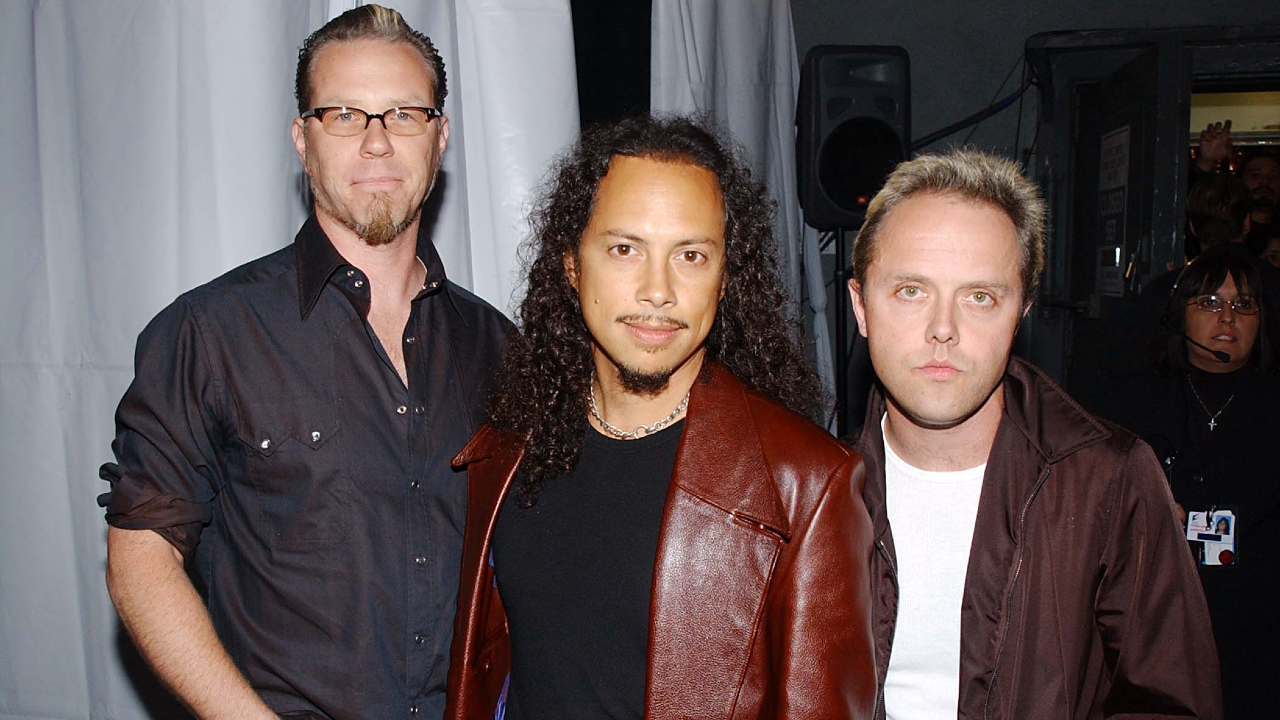
Metallica’s 90s output turned them into the biggest metal band of all time (divisive as much of it proved). Thus, as they entered the new millennium, the pressure to follow up their most commercially successful period seemed to be tearing the Four Horsemen apart. Their row with file-sharing site Napster was a PR disaster (even if time seems to have proven their concerns right) and they lost longtime bassist Jason Newsted to “private and personal reasons” at the start of 2001.
With all of this as a backdrop, Metallica hired the barracks of an old US Army base, named the Presidio, in San Francisco, and turned it into a makeshift studio. There, they planned to write and record what would become their eighth studio album. It didn’t happen. Instead, within 18 months, Metallica had relocated, scrapped everything and started again.
Going into the sessions, it was clear not all was well in the Metallica camp. In a chaotic interview in the January 2001 issue of Playboy (which caught the band openly bickering with one another and the interviewer, and being sneeringly dismissive of many popular metal bands of the time), frontman James Hetfield said, “There’s always got to be some turmoil to write, and now, within the band, there might be some pretty good fuel.”
It was the only nod toward the fact that Metallica were about to start writing new material imminently. However, Newsted left the band that same month. Most believe his desire to release an album with his new project Echobrain, much to Hetfield’s disdain, was the main reason for his departure.
The parting meant that Metallica entered the Presidio as a three-piece, with longtime producer Bob Rock playing bass on the new material, and with filmmakers Bruce Sinofsky and Joe Berlinger there to capture the creation of the album. Between January and July 2001, they worked on their new songs, with guitarist Kirk Hammett claiming that they had “much more melody” and were similar in style to 1991’s commercial smash, The Black Album.
There were around 15 tracks that ended up not being used by the band from those sessions, according to Hetfield. He told Columbus-based radio station The Blitz at the time that the recordings were “cool”, before adding, “They’re not finished.”
The reason they weren’t completed was Hetfield checking himself into rehab for alcoholism and “other addictions” on July 19, 2001. It was a problem that he had hinted at during the aforementioned Playboy interview, when he said of himself, “I wouldn’t say I’m an alcoholic – but then, you know, alcoholics say they’re not alcoholics.”
Without a full-time bassist or their frontman, Hammett and drummer Lars UIrich were forced to call time on the Presidio sessions until Hetfield returned. The comeback didn’t happen until December 2001, and by the time Hetfield was once again in the fold, the enthusiasm the band had for the material they’d created had long since diminished. They relocated to Metallica’s HQ in San Rafael, California, scrapped everything and began recording what would become 2003’s St Anger.
Thanks to Sinofsky and Berlinger’s jaw-dropping documentary of the time, Some Kind Of Monster, there is some evidence of this “lost” Metallica album. Yet, not much of it paints the band in a particularly positive light. Scenes from the sessions that show the band arguing over “stock” riffs, Lars Ulrich screaming “Fuck!” in Hetfield’s face, Hammett facepalming and, most famously of all, Ulrich’s father Tobin suggesting the band “Delete that” after being played a new song are all part of ’Tallica folklore at this point.
But, there is enough footage of the band playing to give us some idea of what the album would have sounded like, since compiled into the bootleg release of what has come to be known as The Presidio Demo in 2012. Compiling the snippets of songs we heard being jammed in Some Kind Of Monster, it shows a more experimental Metallica, with bluesy, elongated sections, as well as some surprisingly, chaotically heavy parts. There are also a few guitar solos in there as well, which is something that Metallica famously decided to avoid on St Anger.
The Presidio Demo is more of an interesting document from a tumultuous time in Metallica’s back-catalogue than it is essential listening. And it seems that those songs’ status as curios will be where they stay.
When asked about whether fans would ever hear those infamous songs in their finished form in the future, Ulrich stated in an interview with The Pulse Of The Radio, “There’s certainly no plans right now. The Presidio was a real awkward time as we were kind of getting our feet wet again.”
The drummer concluded by saying that – even when Metallica began prepping for St Anger’s 2008 follow-up, Death Magnetic – “we didn’t go back and wade through hours and hours of Presidio stuff to try and see what could be resurrected.”







